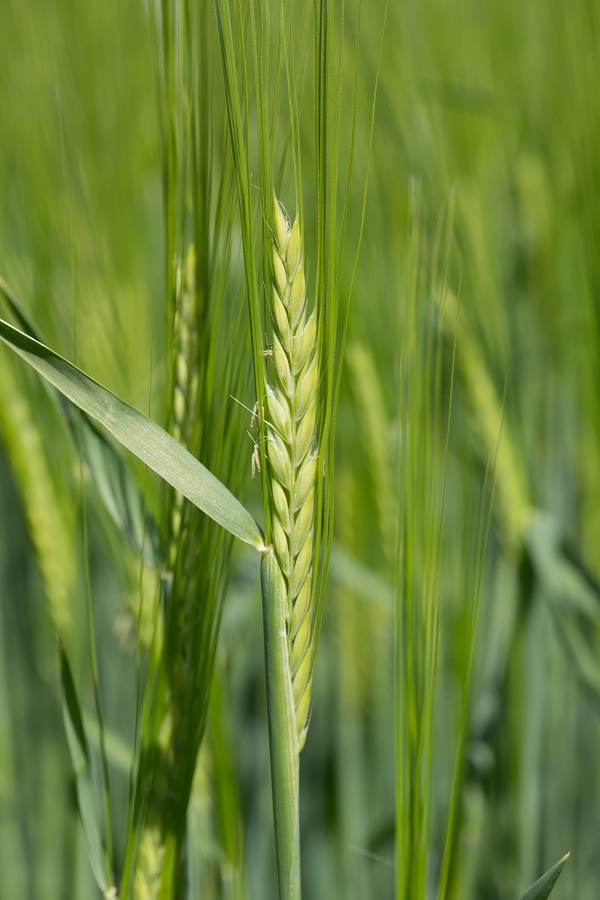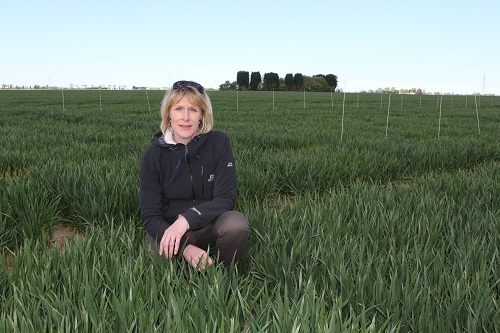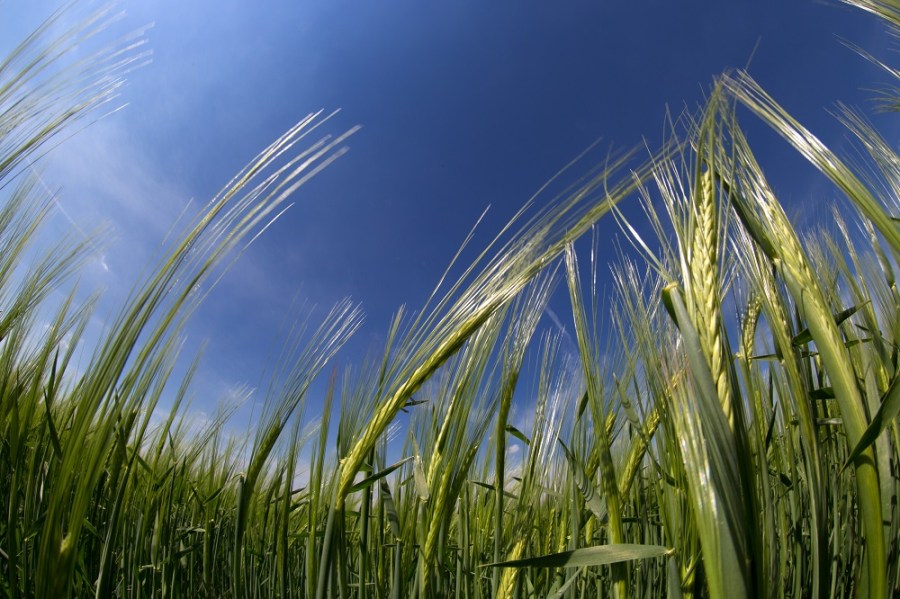Although it’s septoria which tends to hog the limelight where cereal diseases are concerned, ramularia is growing in importance and proving to be even better equipped to evolve resistance to fungicides than its septoria cousin. CPM finds out more.
The SDHI mutation has led to full resistance to all members of that group of chemistry.
By Lucy de la Pasture
Ramularia leaf spot (Ramularia collo-cygni) is a relatively recent disease in the UK, first recognised in barley crops in the mid-1990’s. Initially discovered in Italy in 1893, ramularia has become an important disease of barley worldwide.
Often associated as a disease of particular significance in spring barley, ramularia is equally important spot for spot in winter barley crops, explains SRUC pathologist Prof Fiona Burnett.
“Barley is the largest crop in Scotland and second in the UK, with a market value of £1 billion. Yield losses due to ramularia infection are believed to be around £10 million, with yield losses of up to 0.5t/ha,” she says.
Ramularia has some special characteristics within its complex lifecycle that give it MI6-type capabilities, enabling it to often remain undercover until late in the day, usually only appearing on leaves post-flowering of the crop.

Even the stress of flowering may be a trigger for ramularia development.
“SRUC studies have shown most barley seeds are infected with the ramularia pathogen, which then moves into developing plant tissue and this is the initial source of potential inoculum in the field. Initially its presence within the barley host is benign, the potential pathogen is an endophyte at this stage in its lifecycle. It’s able to grow invisibly within plant tissues and molecular studies have revealed a genetic make-up that ‘cloaks’ the fungus, enabling it to escape detection by the host’s defences,” she explains.
The fungus remains undetected until it is triggered to complete its lifecycle and sporulate, which is associated with the breakdown of host chloroplasts due to activation of toxins, called rubellins, secreted by the fungus and this process gives rise to the brown spots on crop leaves that characterise the disease.
Senescing lower leaves may show signs of infection early in the season, but the main damage occurs on the top leaves after flowering. Later in the season, rows of white spores can be seen with a hand lens on the undersides of affected leaves.
One of the triggers for symptom expression appears to be environmental stress, including high levels of light intensity, waterlogging early on and rainfall up until ear emergence. But even the stress associated with flowering may be enough to initiate symptoms, notes Fiona.
Spotting on barleys is associated with physiological stress and other diseases so it’s likely ramularia has been under-reported in the past. It’s also possible that the disease has become more noticeable because modern fungicides are able to keep the barley crop greener for longer, she suggests.
As well as becoming an increasingly common disease in the UK, ramularia is causing a bit of concern because it’s evolving resistance to all the main groups of fungicides with a single target site – the QoIs, the azoles and the SDHIs. That’s not exceptional in its own right but in 2017, the disease made a step-change in sensitivity to SDHIs and more surprisingly also to the azoles, an unprecedented evolution to a fungicide group where shifts in sensitivity tend to be more progressive, explains Fiona.

Ramularia is causing a bit of concern because it is evolving resistance to all the main groups of fungicides, says Fiona Burnett. (Photo by permission of Off the Shelf)
Ramularia leaf spot was initially controlled by QoI fungicides, but during 2002 there was a marked decline in the activity of QoI in comparison with previous years. This was due to the sudden development of resistance among populations of R. collo-cygni in the UK, where a single amino acid substitution, changing glycine (G) to alanine (A) at position 143 in the cytochrome b gene, was responsible and is known as the G143A mutation.
“In 2014 single R. collo-cygni isolates with slightly decreased sensitivity to SDHIs were detected in France and Germany. A year later, isolates were found in Germany with mutations C-H146R or C-H153R. SRUC testing in 2016 picked up shifts in the efficacy of SDHIs and prothioconazole and this was borne out in 2017 trials results where control was only achieved with chlorothalonil (CTL)-containing products.
Last spring, Bayer resistance testing in southern Germany confirmed the presence of two new mutations in isolates from the 2016 season, adds the company’s fungicide development manager Dr Kerry Maguire. “One impacts the performance of SDHI fungicides, and another affects the azole group of fungicides.
“The mutation discovered in the target site for azoles has been found to severely impact the performance of all actives in this group. This is unlike the mutations to azoles found in septoria, which incur a loss in sensitivity resulting in a slide in efficacy, rather than a significant drop in performance. In addition, the SDHI mutation has led to full resistance to all members of that group of chemistry,” she explains.
Where these mutations have been found no SDHI or azole fungicide will now control ramularia, even when used at full rates. But Kerry points out that Bayer work shows mixed populations of the disease have been found in fields, with isolates ranging from fully sensitive to highly resistant according to their EC50s.
In the UK, analysis of ramularia samples, taken from a small number of barley crops in 2016, identified the presence of the same mutations potentially conferring resistance to SDHI and azole fungicides. Unlike in Germany, where both types of mutations were found together in ramularia samples, in the UK this was less frequent in the samples analysed. This probably helps to explain why complete loss of control was not seen in the UK last season, adds Kerry.
“Prothioconazole shows a broad sensitivity range, with the very high resistant strains mainly in South Germany, with just a few in UK and Netherlands. There’s been a moderate/significant sensitivity change in Ireland, Belgium and NW Germany with fully sensitive strains still found in France, Austria and the UK. The EC50 reference range is 0.7-2.3 mg/l in the sensitive population with tested isolates showing an EC50 range from 0.9 – > 1000 mg/l,” she explains.
This change in the population of ramularia leaves CTL as the only remaining effective chemical option for control of the disease where these new strains are present.
“There’s a wider choice of active ingredients available for use in barley than wheat, so growers should make use of this diversity and apply balanced mixes of different active ingredients to manage the range of barley diseases and should include CTL, particularly at the T2 timing where ramularia is the target,” advises Fiona.
Bayer trials at Woodbridge in Suffolk last year back up the contribution to ramularia control made by adding CTL. Both control and yield were significantly increased where CTL was added to Siltra (prothioconazole+ bixafen) at T2, according to Kerry.
“In early season, morpholines are still useful, especially where some eradicant activity of early foliar diseases are needed,” suggests Fiona. “SDHI plus QoI is another option but include a third partner if net blotch is a target, as there’s partial resistance present to both these actives.”
With stress a major factor in triggering the development of ramularia leaf spots in barley crops, there’s a lot to be said for making sure other barley diseases are well controlled, adds Kerry.
The findings of highly resistant strains of the ramularia pathogen is of concern because genetically the ramularia pathogen is very closely related to septoria, explains Fiona.
“The significant shift in sensitivity to azoles is particularly unusual and is important because it may mean the ramularia pathogen has evolved a further resistance mechanism we don’t yet understand.”
Ramularia’s 5-R’s
Accurate diagnosis of ramularia can be made by following five basic rules – the five R’s – which help distinguish it from other foliar diseases – old mildew lesions, net blotch and tan spot can have similar symptoms. To be certain its ramularia leaf spotting, the following are distinguishing characteristics.
- the spots will be ringed with yellow margin of chlorosis.
- rectangular in shape.
- restricted by the leaf veins.
- reddish-brown in colour.
- the spots go right through the leaf.




